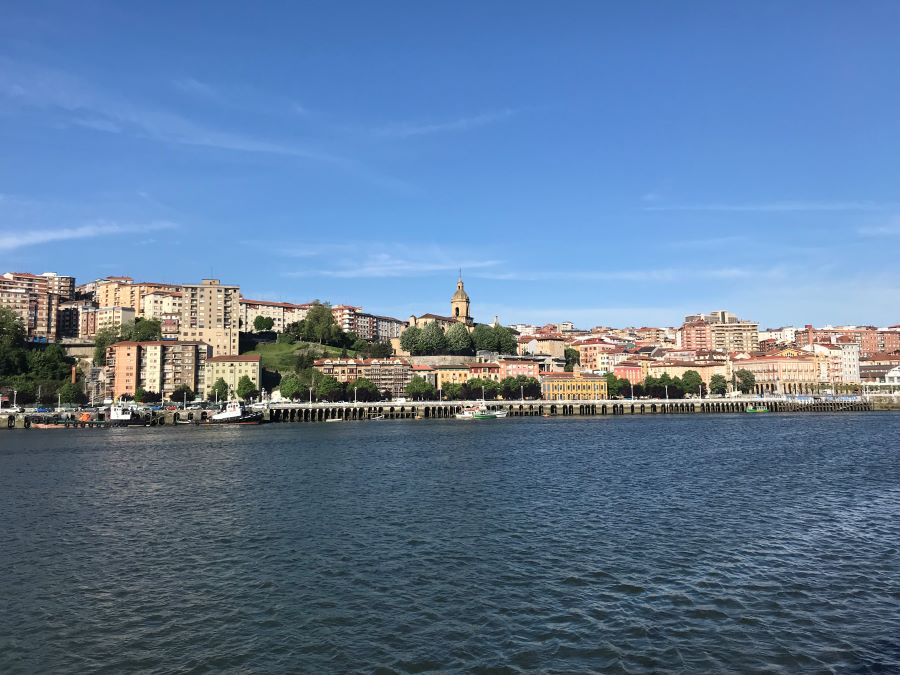I was more impressed with Bilbao this morning than yesterday evening. I opted to take a longer route out of the city, following the Ria de Bilbao on the east side for about nine kilometers to Portugalete.

I had a full hour’s walk along the river, passing parks and interesting architecture, before I ended up in the industrial area. I passed apartment buildings where low-income residents hung laundry from their windows in narrow alleys that might only see the sun for an hour per day.

Buildings seemed to be in poor shape with crumbling walls and damaged foundations. A school yard was surrounded by a twenty-foot fence and covered completely in asphalt, with nary a blade of grass to be seen.
Close to Portugalete, I came across the aftermath of a bad crash. A small car had run into the back of a truck and was so damaged, it’s hard to believe anyone survived it. The somber moods of onlookers and police officers were quite sobering. A reminder of how short life might be, and to be thankful for and embrace each day.
To get from Las Arenas to Portugalete, I crossed the river on the famous Puente Colgante, a bridge that hangs from wires about 20 meters over the water and moves from one bank to the other like a gondola. It can hold about a hundred passengers and six vehicles.

In Portugalete, the route follows the streets on a steep uphill, but the city has installed moving sidewalks, the type seen at airports to move people along more quickly. Such an easy way for pedestrians to get up the hill, and once again, I thought, what civilized hiking this is.

I walked alone today under beautiful skies for over 40 kms, stopping only twice to eat. For breakfast, I had tortilla, pastry, and a coffee. For lunch, I had tortilla, pastry, and a beer. It’s, er, important to try different foods from time to time.

In the village of Onton, I passed from Basque Country into Cantabria, stopping at its first major city, Castro-Urdiales, where I explored some ruins from a Templar castle. The route of the Camino leads up a stone staircase to the Parish Church of Santa Maria de la Asunción, one of the finest Gothic churches on the Camino del Norte. I would have loved to enter the church to see the famous cross from the Battle of Las Navas de Tolosa, but unfortunately, like most of the churches I’ve seen along the Way, it was closed.
I met Anna, a retired woman from Denmark, who is doing her third Camino. She has some pain from walking, but she says, “Pain is temporary, proud is forever.”
I also met a woman from the United States who shall remain anonymous. One of her many tattoos reads in big bold letters “NOW HERE THIS”. I wonder if she even knows it’s spelled wrong.
